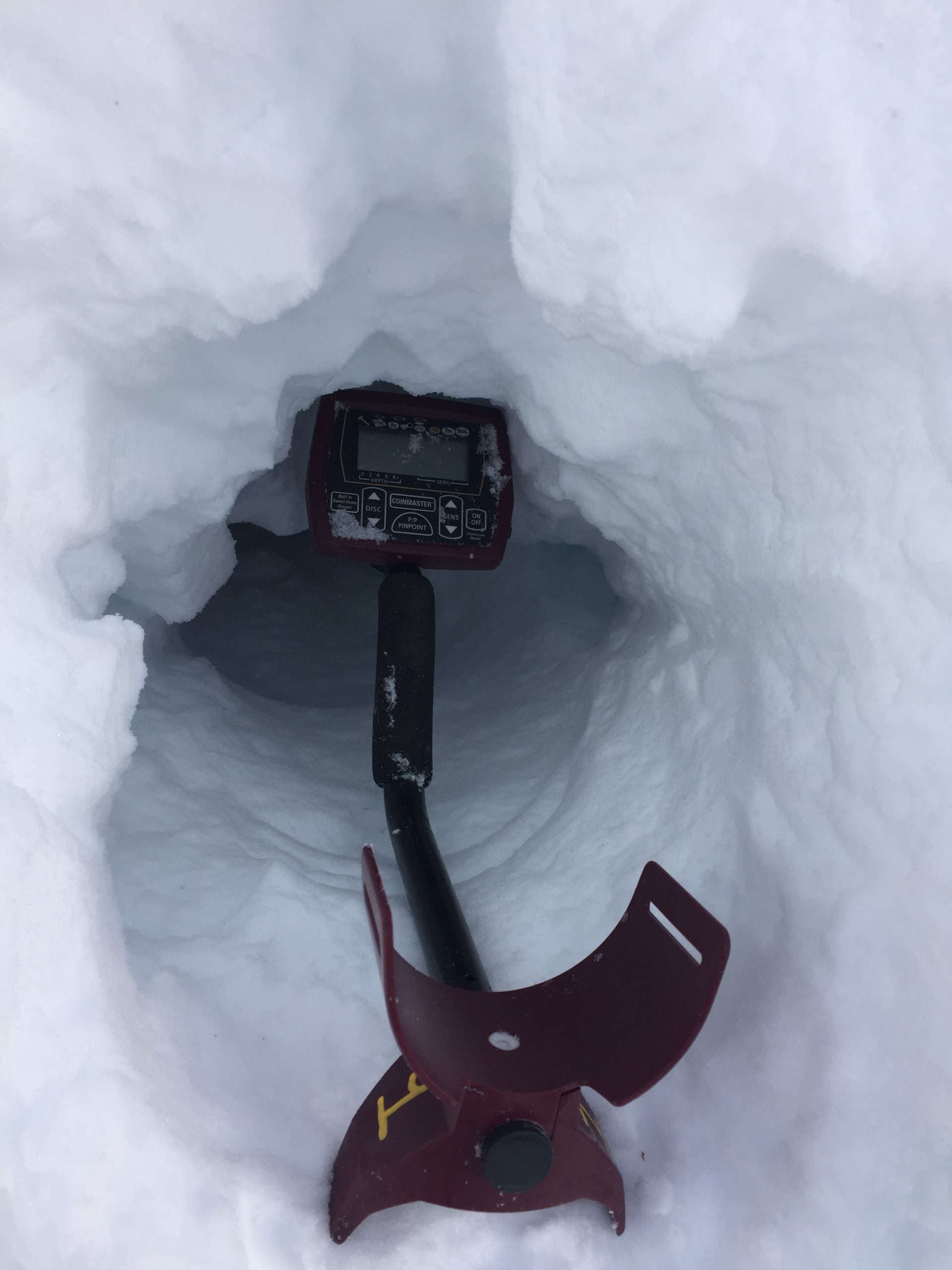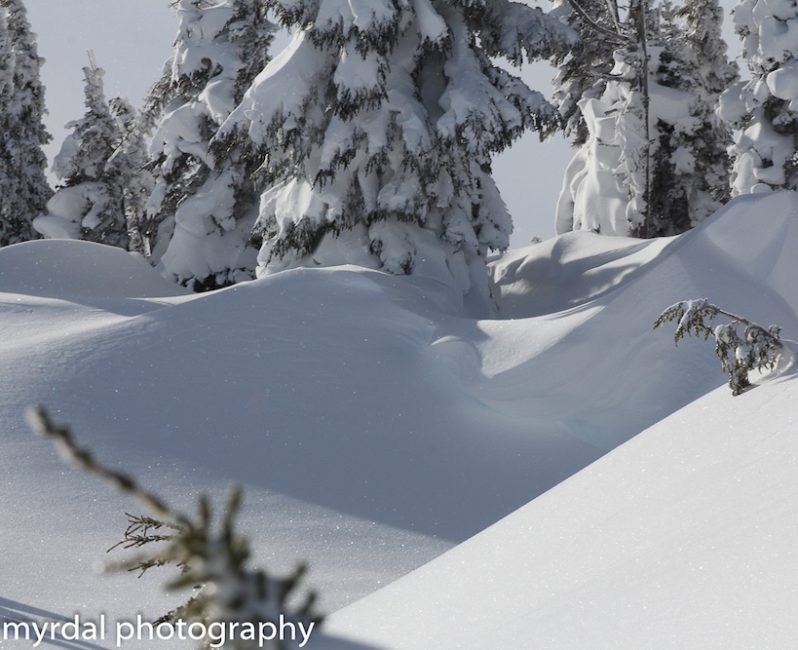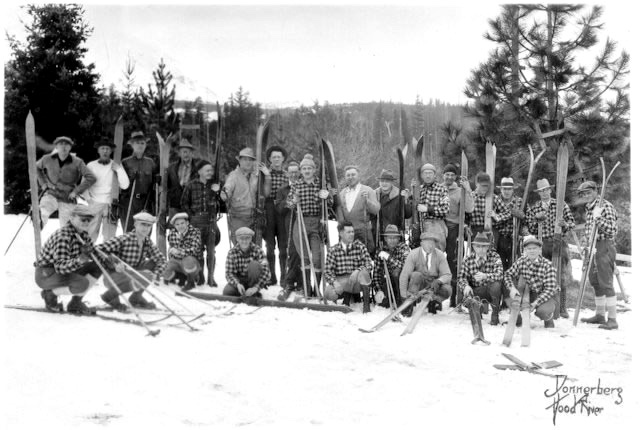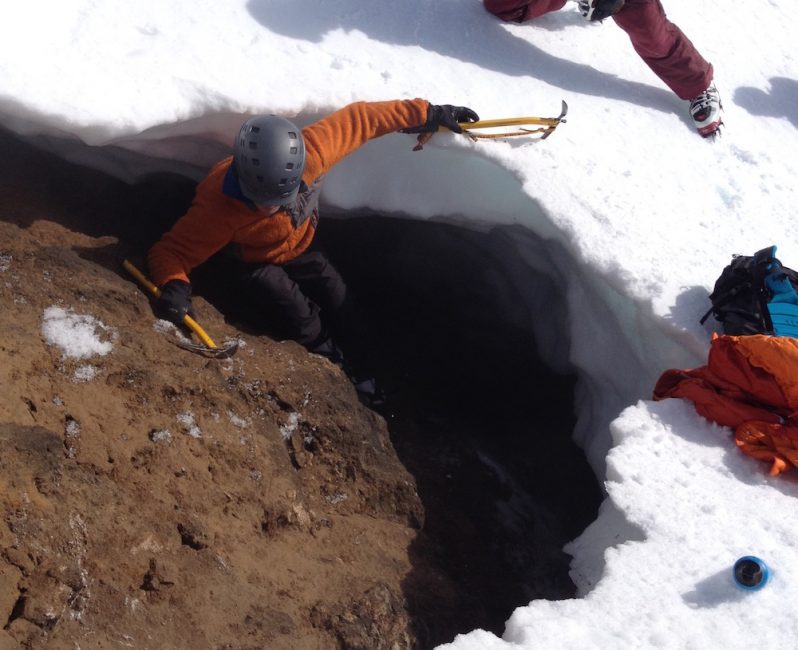As soon as I saw my ski sliding away from me I knew it was not going to stop.
The slope was too steep, the snow too light, and my ski was picking up speed even though the brake was engaged. I dove for it with both hands and squeezed but it slipped away. Face down in the powder, I had no idea where my ski had gone.
I jumped up and dusted off. An increasingly steep pitch lay below me, dropping down to a creek bed with white walls on both sides. My ski had to be somewhere between me and the hidden water at the base of the creek, beneath who knows how much snow. 10 feet? 15? 20?
20 Feet of Snow
It has been a fantastic snow year on Mount Hood this year. The mountain has gotten about 20 feet of snow so far, and the depth at 6250 feet of elevation is 146 inches – more than 12 feet. It’s even deeper in the gulleys and stream beds. And it has been exceptionally light snow, perfect for skiing but potentially quite hazardous. The tree wells are deep, the creek hazards even deeper.
My ski’s vanishing act had unfolded quickly. My plan had been to catch a little air, poach a couple of turns in the untouched powder between Willow and HRM Face and then arc left to steer clear of the creek hazard. But then I landed on something hidden beneath the snow, my ski popped off, and down it slid, into the white abyss. Normally ski brakes will stop a runaway ski, but not this year, not in this snow. Note to self: powder straps!
Too late. I stood there on one ski, squinting into a landscape of pure white, knowing a) I was within 100 yards of my ski, and b) I might never see it again.
Someone yelled down from the chairlift: “Careful! There’s water down there.”
True. I was perched uphill from a dangerous hole that I did not want to fall into. I skied safely down to the base on one ski, talked with a few lift operators, and eventually met up at the top of the Hood River Express lift with a ski patrol guy named Ben and my mountain buddies Shawn Hokkanen and Jen Winklepleck, who generously volunteered to help me. I struggled to keep up while riding one ski, channeling Bode Miller minus the superhuman leg strength. How that guy completed a World Cup downhill on one ski is beyond me. We eventually found the spot where my ski had vanished, and we started probing with our ski poles. Shawn and I worked our way into the creek bed, careful to respect the terrain and avoid holes. I plunged my ski pole down all the way to my gloves and I was nowhere near the bottom. Jen checked the slope above, and Ben lapped back to retrace my line down. Nothing worked. After about an hour I thanked Ben for his help and hobbled over to the Mazot on one ski with Shawn and Jen to make plans for a ski recovery expedition. Three things I knew for certain: I needed a shovel, I needed a metal detector and I was not about to give up. No way.
I love my skis. They’re ON3Ps: big, fat beauties built in Portland, Oregon with a Bamboo core and all sorts of float and glide. These are by far the best skis I have ever sampled for properly enjoying fresh powder. My preferred model is the Cease and Desist, designed by company founder Scott Andrus specifically for his own tastes and style and originally named the Great Scott. The Swiss ski industry giant Scott Sports didn’t appreciate the alleged trademark violation and sent the Oregon upstarts a “cease and desist” letter threatening legal action. Thus the updated name.
I also love my bindings. They’re Marker Dukes, with a handy lever to convert from Alpine mode for skiing to Nordic mode for climbing with skins. These bindings are not cheap, but in my humble opinion they are the best. I have experimented with three-pin telly systems and Dynafit AT set-ups, and nothing matches the confidence that hits you when you lock down your Dukes on top of a mountain and click in knowing you’ll be riding the exact gear you want to be riding, with full stability at all speeds and in all conditions.
A new pair of ON3Ps mounted with Marker Dukes is a thousand-dollar proposition at minimum. Time to find a metal detector.
Hurricane Force Winds
I picked up a metal detector at Interstate Rentals in Portland, packed up snowshoes, skis, and water and headed up early on Wednesday, January 4th, on what turned out to be the nastiest weather day on Mount Hood in a long time. The wind was blowing a steady 30 miles per hour with rogue gusts of up to 102. That’s right, 102 miles an hour – hurricane force. Timberline Road was closed, the road was icy from Sandy up, and Hwy. 26 was eerily empty of traffic, with ultra-light powder swirling in crazy patterns across the glistening pavement between snow banks.
Timberline had shut down entirely, but Meadows was still game to operate the Stadium and Hood River Express lifts – for a while anyhow. The Hood River Meadows parking lot is well protected from the wind by the surrounding forest, so I managed to get my boots on without the wind ripping a door off my RAV-4. I met a young ski patroller named Andrea who kindly volunteered to join me on a few laps and try to find my ski. But then the wind picked up and all lifts went to weather standby, followed by a full-on closure. I was on my own.
It was the first time in recent memory that Mount Hood has been lift-free in the peak of the winter season, and it was a bit surreal, climbing up in my snowshoes, nothing but the sound of the wind and the ravens squawking, riding the wind the way they do in big storms. Meadows has a no-uphill-travel policy, but I figured I was good for this mission, since the mountain was deserted and I wouldn’t be getting in anyone’s way.
 An hour later there I was, at the exact spot where I dove for my ski and came up short. I started using my snowshoes and shovel to cut a switchback down into the creek, probing as I moved with my ski pole and the metal detector. I quickly discovered that metal detectors work just fine when buried in deep snow – possibly too well. The beeper sounded constantly as it picked up the metal in my snowshoes. I got dozens of false positives, but no sign of that ski as I methodically worked my way downhill.
An hour later there I was, at the exact spot where I dove for my ski and came up short. I started using my snowshoes and shovel to cut a switchback down into the creek, probing as I moved with my ski pole and the metal detector. I quickly discovered that metal detectors work just fine when buried in deep snow – possibly too well. The beeper sounded constantly as it picked up the metal in my snowshoes. I got dozens of false positives, but no sign of that ski as I methodically worked my way downhill.
The snowshoes also worked well. They helped me to cut paths and stomp down snow, and I could climb and maneuver fairly well in all that snow. I spiraled down to the spot where gravity led me, and I dug and dug, but it was hard to tell whether I was digging in the right place. At one point I got down flat on my belly on a solid platform of packed snow and reached over to plunge the metal detector down as deep as I could. The full length of my arm and the detector extended down into the light powder, and still I felt no sign of any kind of a bottom. This was after digging down about four feet into the snow to create my platform.
After two and a half hours of fruitless digging and probing and stomping, I was ready to give up. But then I heard a faint beep from the detector that I knew wasn’t from my snowshoes because of the angle. I wedged the detector deeper and the beep got louder. And then CLUNK. I hit something solid. Please, let it be! And it was: my ski!
Victory!
I fished my ski out using my ski pole, reeled it in and proceeded to enjoy the most rewarding one-ski run of my life.
Lessons Learned
So what did I learn from my lost ski misadventure? A few things:
- Metal detectors work.
- Ski brakes don’t always work.
- Powder straps to prevent lost skis are a very good idea.
- Snowshoes with crampons work better underfoot than skis when you are looking for a lost ski.
- A small, light shovel is a good item to have handy.
On the one hand, it was lot of work just to get back to where I started – a place I could have avoided by simply resisting the temptation to jump into fresh powder that was probably untracked for a reason. On the other hand, I have to admit that I had a great time out there battling that snow in the midst of a winter storm. Ever since I was a kid in upstate New York I’ve always loved messing around in the snow, building forts, digging tunnels, watching the storm build around me. My lost ski expedition gave me an excuse to be a kid out in the snow again, and the fact that I was successful in the end justified the effort. I probably could have waited for the snow to melt and found my ski a lot easier come May, and it probably would have been perfectly preserved in its snow cocoon. But that would have meant going without my favorite skis for a lot of powder days this winter, powder days I intend to enjoy fully – with my new powder leashes snugly attached to my boots.
Shred Hood Editor Ben Jacklet is a lifelong skier and writer based in Portland, Oregon, and an MBA student at Portland State University.
Last modified: January 5, 2017




